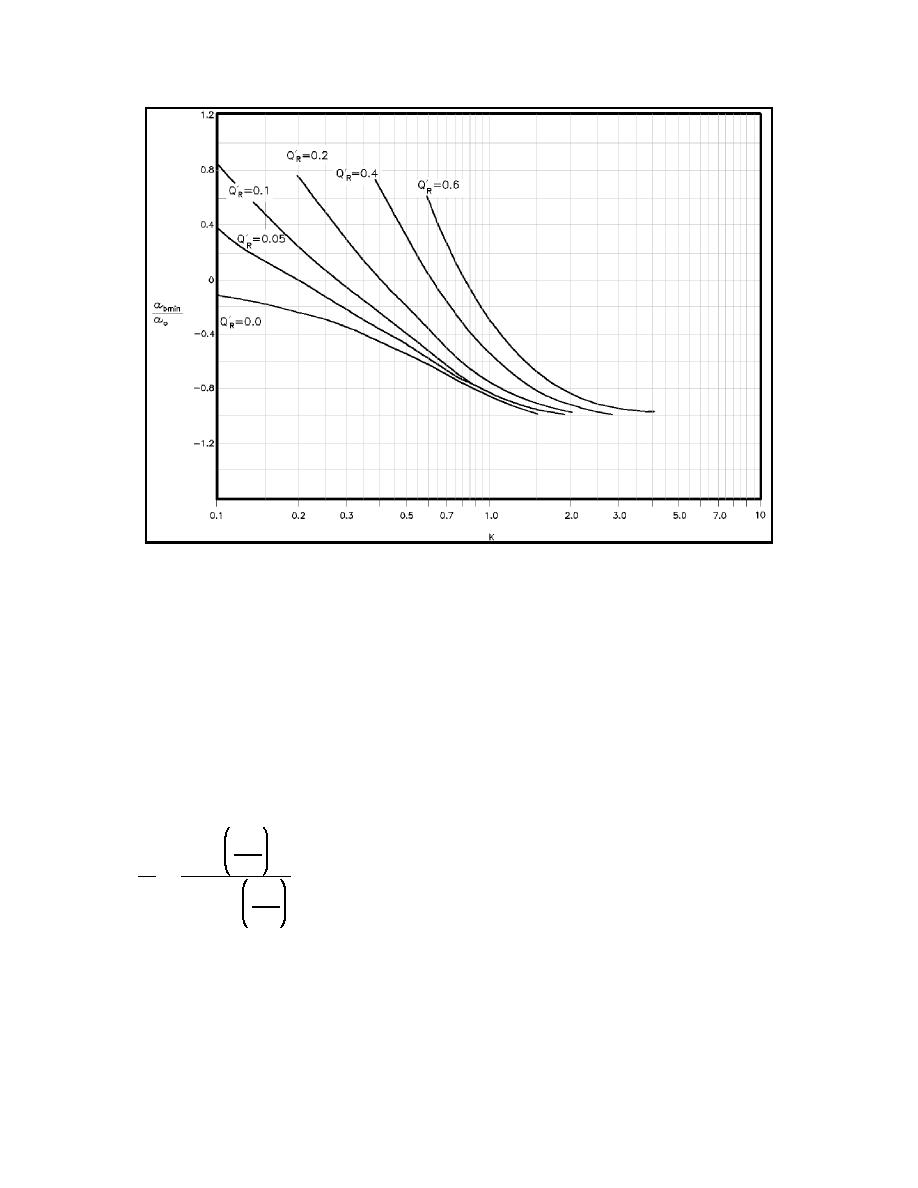
EM 1110-2-1100 (Part II)
30 Apr 02
ab min/ao versus K for values of QrN (river discharge model)
Figure II-6-26.
(2) Laboratory and numerical studies (Mayor-Mora 1973; Mota Oliveira 1970) have indicated that there
is an increasing bay superelevation as the coefficient K decreases (Figure II-6-30) and approaches nearly
20 percent of the ocean tide range. This basic cause of setup is due to increased frictional dissipation of ebb
flow in comparison to flood flow as K decreases, with peak ebb flows in the channel occurring during lower
water levels for inlets with low K values. This increased tractive stress for ebb flow relative to flood flow
creates the setup, or increased head, necessary to preserve continuity and drive out the same tidal prism that
entered the inlet.
(3) Model studies (Mayor-Mora 1973) show that as K decreases (and superelevation increases) the
duration of ebb flow increases relative to flood flow in the inlet channel. Keulegan (1967) determined a
relation between inflow duration and bay superelevation (due to any reason) given by
2πti
sin
∆
T
(II-6-20)
'
ao
2πti
1 & cos
T
where
∆ = superelevation
ao = tidal amplitude in ocean
II-6-30
Hydrodynamics of Tidal Inlets


 Previous Page
Previous Page
